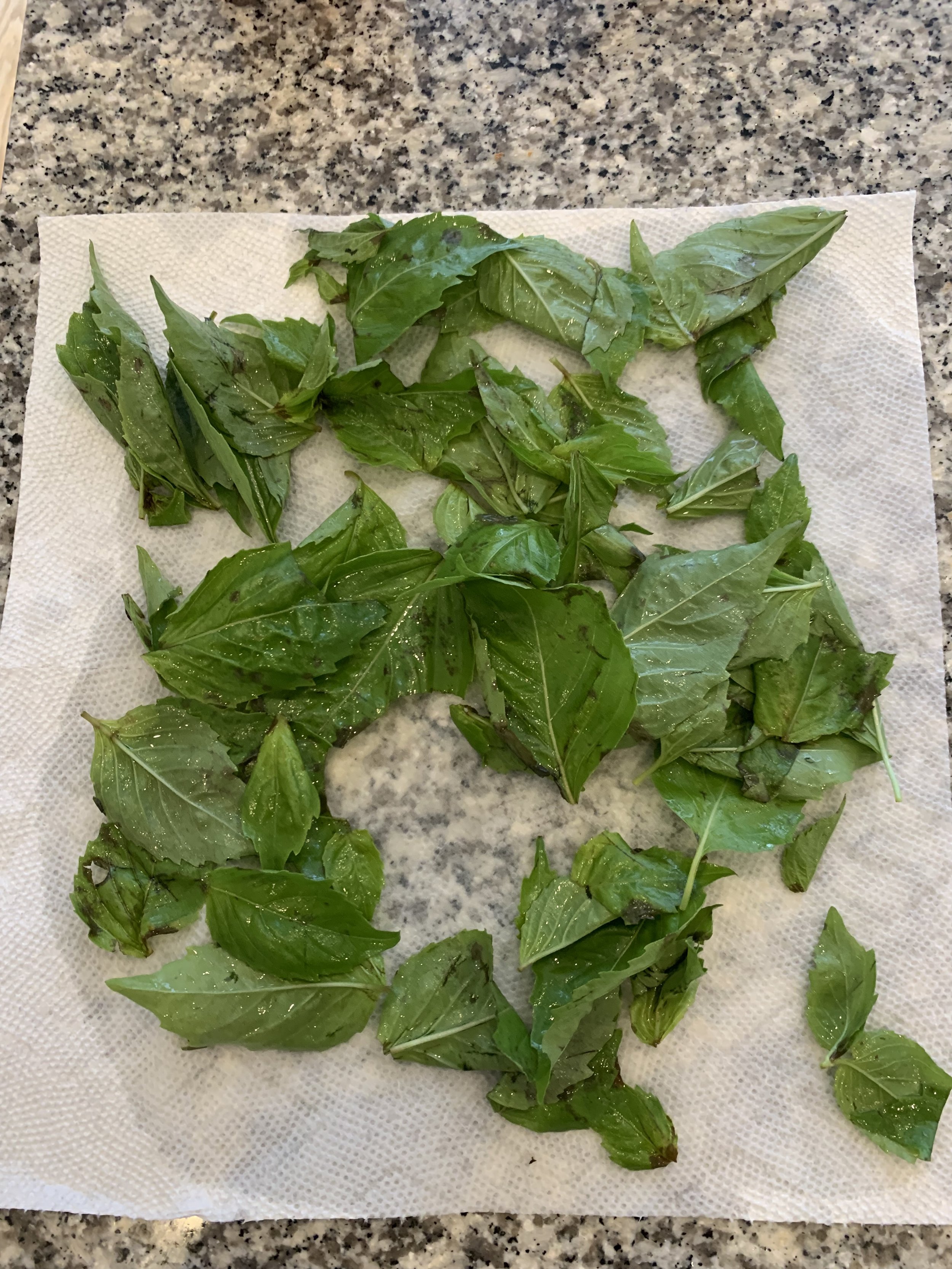Perseverance Pesto Pasta
Friends, it’s been a daunting few months. Roe v Wade fell. Mass shootings continue, including close to home on the 4th of July. War continues in Ukraine. The list goes on.
What to do in such times? Protest. Donate. Volunteer. And don’t give up.
I won’t pretend that finishing a pesto recipe is anywhere on par with fighting for justice, but as US Navy Admiral William McRaven shared, if you want to change the world, start by making your bed. The little daily acts of getting something done add up to the will to fight for big ones.
So when my pesto recipe faced a few hiccups in execution (half my basil went bad, the food processor stopped working), I took it as a sign to soldier on in pursuit of carbs, and justice. I encourage you to do the same.
INGREDIENTS - Inspired by Marcella Hazan’s pesto recipes in Essentials of Classic Italian Cooking, a book recommended by a close family friend and one of the best home chefs I know. As she wisely notes, the quality of the end dish correlates tightly with the quality of ingredients, so splurge on some nice cheese, olive oil, basil, etc.
2 cups tightly packed basil / arugula leaves
2 garlic cloves
3 tablespoons toasted pine nuts
Scant 1/2 teaspoon salt (slightly less than the full 1/2 tsp)
1/2 cup extra virgin olive oil
1/2 cup freshly grated parmiggiano-reggiano cheese
2 tablespoons freshly grated romano cheese
1.5 pounds pasta - Cavatappi used is my favorite due to its abundant surface area, but Marcella Hazan recommends spaghetti, potato gnocchi, fresh fettuccini, or tonarelli.
1 food processor or a mortar + pestle
RECIPE
This recipe is supposed to be made with 100% basil leaves, and it’s best that way. But to my chagrin, I learned the hard way that fresh basil rapidly turns brown in a refrigerator. When I put my basil into the fridge, I heard distant alarm bells in the back of my mind, perhaps the ghosts of fresh basils past, but I thought, “pesto keeps refrigerated for about a week or months in the freezer. How bad can one night in the fridge be for fresh basil?” Pretty bad. In about eight hours, bitter dark brown spots claimed half of what I bought.
Not to be deterred, I picked through the remains and was able to salvage one tightly packed cup of basil leaves. As instructed by Marcella Hazan, I washed and briefly soaked the basil leaves in cold water then patted them gently dry with paper towels.
“Leave” it to fresh basil, the prima donna of the herb world, to require gentle towel dry treatment
Fortunately, I was able to supplement my basil with 1 cup of packed arugula I happened to have on hand, and the taste of a basil / arugula blend is very close to original. Using 50-100% arugula is also much cheaper (if you haven’t already bought and lost half your supply of basil).
One hurdle overcome, I put my basil, olive oil, pine nuts, garlic, and salt into my food processor, and hit start. Nothing happened. I tried multiple outlets, multiple buttons, multiple blades. All a lost cause.
Scene for Samuel Beckett’s lesser known work, “Waiting for Cuisinart”
My pesto story could have ended there, but thankfully, the original method of making pesto is with a mortar and pestle, a method for which Marcella Hazan also has instruction, and a tool I happen to have.
So I took my pesto fight into my own hands literally, and pounded the leaves, oil, pine nuts, and garlic into a slick, smooth oblivion.
This is for you, Admiral McRaven!
Next I mixed the grated cheeses in by hand (a step that should happen by hand regardless of whether you use a food processor or a mortar and pestle). A key penultimate step - taste the pesto. If you want it more garlicky, cheesy, salty, etc. add more to taste. If you want to tone down garlicky, salty, cheesy flavors, add more basil / arugula / olive oil.
Cook the pasta to the al dente time suggested, and add 1-2 tablespoons of the hot water in which the pasta was cooked to the pesto to thin it out.
Pesto should look lovely and glossy, like a fresh magazine, which will mean nothing to kids 30 years from now.
Toss the pasta with the pesto, and enjoy! Note this dish, while delicious, is not crazy filling since there almost no protein. In my opinion, it is best as a side dish, though I caution that you may end up eating more of it than whatever protein you’ve selected.
I took pesto pasta to Mudit’s study on a mission of mercy as he was working on a Sunday.
Of course, I had to taste the final product, just to confirm it is good.
It is good. To perseverance and pesto pasta!












